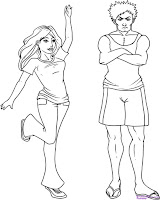Martial arts is a great way to build physical strength, discipline and confidence. Martial arts can also teach us important leadership skills, offering insights into human behavior, trust, and respect. Compassionate leadership takes practice, and martial arts with its practical approach is a great way to increase awareness and understanding of the positive power of leading with compassion.
We do know that Leadership is the ability to inspire others towards a common goal. This can be done through personal presence, spoken words, and the demonstration of good character and values. Martial arts offers an ideal environment in which to practice these skills, as aspects of the practice such as respect for others, self-control, and understanding of one’s emotions can be explored.
Leadership is not about force and aggression - like martial arts, but rather about managing people in a way that encourages cooperation and respect. Martial arts can teach leaders to remain calm in the face of difficulty and to make decisions with clarity and foresight. By learning to control their own emotions, with knowledge of martial arts leaders can be better at managing challenging situations and inspiring their teams.
The practice of martial arts also offers key insights into effective communication. Martial arts teaches practitioners to communicate through their whole body, not just words. This physical communication helps to increase understanding and trust, as well as conveying feelings of respect and empathy. Leaders who are better listening, communicating and understanding can create an environment in which others feel comfortable and safe to express themselves.
Martial arts can also be a great way to foster teamwork and collaboration as a lot of practice is done with different partners and also with group of them. Through martial arts training, practitioners can learn to rely on one another in challenging situations, and to trust their partners in times of need. As a result, leaders can create a culture of mutual respect and collaboration in the workplace.
Leading with compassion is an important part of effective
leadership. By utilizing the insights and teachings of martial arts, leaders
can develop the skills and understanding to lead with empathy and respect.
Through martial arts, leaders can create a culture of trust and collaboration,
inspiring their teams to reach their highest potential.


































